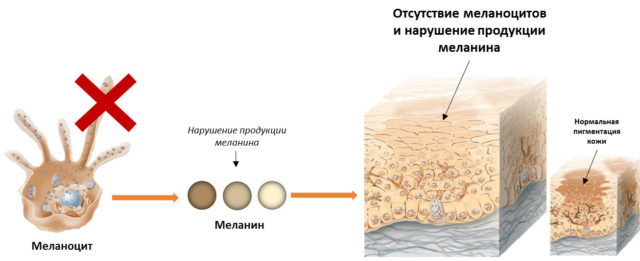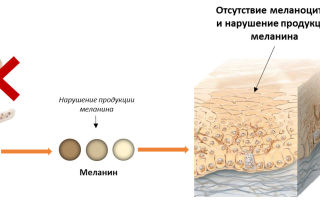Content
Melanin is a pigment found in the body. That is why it is natural. The color of the skin, eyes and hair depends on the amount of pigment. However, melanin is not considered solely as a coloring matter. It performs protective functions. It is important to maintain the required concentration of the component. Most of all melanin is found in orange foods.
What is Melanin in Food
The pigment is produced by melanocytes, which are the cellular elements of the skin. Its greatest concentration accumulates in the nucleus to prevent damage to the genetic material.
The main function of melanin is to protect the skin from harmful ultraviolet radiation. The presence of the substance makes it possible to partially absorb carcinogens. With a sufficient amount of pigment, sunburn does not appear on the surface of the skin. The sunburn in such cases lays down exactly. The risk of malignant tumors is reduced.

The following functions of the substance are called:
- neutralization of free radicals;
- acceleration of biochemical processes and reactions;
- reducing the negative impact of stress factors;
- maintaining the functioning of the thyroid gland and liver;
- normalization of protective forces;
- hair and eye coloring.
With age, the amount of melanin decreases, which provokes the appearance of pigmentation, gray hair. That is why it is important to adhere to a diet that allows you to make up for the lack of a substance and maintain attractiveness.
For a sufficient synthesis of melanin, it is necessary to often stay in the fresh air, go to the sea, and also engage in physical education. In some cases, the use of special drugs that promote the production of a substance is indicated.
Benefits of Melanin Products
Experts note the positive effect of the component on the organs of vision. The pigment provides clarity of vision. The content of vitamin A is essential, sufficient intake of which reduces the risk of developing night blindness.
Products that include pigments are distinguished by the presence of the following beneficial components:
- Organic compounds... These include vitamins A, E, C, group B. Substances have a positive effect on the state of the immune and nervous systems. The products contain melanin and retinol for the eyes.
- PUFA... Omega-3s have a beneficial effect on the brain and prevent the early signs of aging in the body.
- Protein... The substance is a building material for muscles. Adequate intake of protein ensures the normal functioning of the body.
- Carbohydrates... They saturate with energy. The so-called slow carbohydrates found in cereals contribute to long-term satiety.
Many fruits and vegetables also contain vitamin C, which interferes with pigment synthesis. However, it is impractical to exclude these foods from the diet.
The harm of melanin-rich foods
An adverse effect on the body can be observed with excessive consumption of food that promotes the synthesis of the substance.It is known that orange fruits and vegetables often provoke allergic reactions. Adverse effects are more common in children.
What foods contain melanin
Responsible for the synthesis of pigment diet, including:
- Animal products... It includes not only meat, offal, but also milk, cottage cheese, cheeses. Oysters, mussels, fish, seaweed produce a good effect. This food also contains protein and copper to help firm up the skin.
- Greens, legumes, cereals... Experts in this group distinguish pumpkin seeds and sesame seeds, beans, lentils, peas. Lettuce leaves, parsley, green onions, and spinach are especially useful. Oatmeal, rolled oats and buckwheat are called cereals. The food list is rich in retinol, tocopherol and B vitamins.
- Orange vegetables and fruits... Melons, pumpkin, apricots, carrots, tangerines, persimmons contain a sufficient amount of the necessary carotene. These foods contribute to the production of melanin.
Have a positive effect on pigment synthesis:
- nuts (hazelnuts, almonds, peanuts);
- fruits (coconuts, avocados, bananas);
- vegetables (beets and cabbage).
Melanin production can be increased by eating dark leafy crops.
Contraindications to products containing melanin
It is not recommended to eat foods that contain pigments in excess. This disrupts the production of the substance and increases the likelihood of unwanted effects.
Eating certain foods helps maintain the required level of pigment in the body. The list of foods for melanin production includes different food groups.
Rules for the use of products containing melanin
Skin tone, as well as hair and eye color, depend more on genetic factors. However, a balanced diet allows you to maintain the pigment production at the proper level. The most beneficial are orange vegetables and fruits, which are consumed in adequate quantities. An excess of certain foods is just as harmful as a lack of them.
Useful Tips
It should be remembered that they reduce pigment production:
- salty croutons, chips, peanuts and pickles;
- pastries, cakes, buns, ice cream, sweets, waffles, marshmallows, cookies;
- alcoholic and carbonated drinks;
- strong coffee or tea;
- boiled corn.
A well-designed diet with a predominance of wholesome food makes it possible to compensate for the deficiency of the substance.
Conclusion
Most of all melanin is found in foods of both plant and animal origin. Its amount is due to genetic characteristics. A balanced diet helps maintain the required pigment levels.

